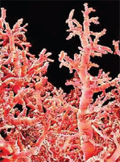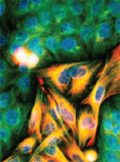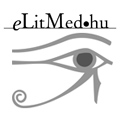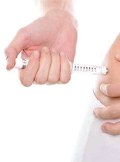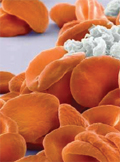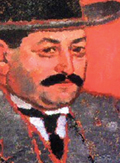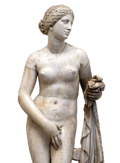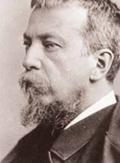The eLitMed.hu medical portal uses computer cookies for convenient operation. Detailed information can be found in the Cookie-policy.
Lege Artis Medicinae - 2011;21(10)
Content
[Pulmonary arterial hypertension in systemic autoimmune diseases]
[Pulmonary arterial hypertension is a rare disease, but it occurs more often in systemic autoimmune diseases, where it represents one of the most severe, life-threatening complications. Its development is due to an immunoregulatory disorder characteristic to systemic diseases, persistent inflammation and the subsequent endothelial dysfunction, the presence of pathogenic autoantibodies, smooth muscle cell dysfunction and complex angiogenetic disorder. As a consequence of endothelial cell dysfunction, the balance between regulatory factors of vasoconstriction and vasodilation is disrupted. Intimal hyperplasia, endothelial cell proliferation, media hypertrophy and local thrombus formation can be observed and one of the main pathomorphological characteristic features, plexiform lesion develops, leading to obliterative vasculopathy. A more severe form of the disease develops in systemic sclerosis, which is explained by the main pathophysiological elements of scleroderma, namely immunoregulatory disorder, vasculopathy and fibroblast dysfunction. It is not easy to monitor the disease in these cases, because the deterioration can be caused by many other factors as well. Therefore, beseides the usual examinations, biomarkers and screening methods have a significant role. Treatment is not simple either, since no wellapplicable algorithms are available. In many disorders (systemic lupus erythematosus, mixed connective tissue disease, rheumatoid arthritis), effective immunosuppressive therapy started in time is crucial, whereas in case of systemic sclerosis, the principles of therapy applied for the idiopathic form should be followed.]
[Perioperative management of patients with coronary stent in case of interventions other than cardiac surgery - Part I. - Perioperative treatment of patients with coronary stent]
[Percutaneous coronary intervention (PCI) is meant to optimalise cardiac status, that is, short-term and long-term outcomes. It is known from large Western databases that stent implantation is performed in 77-85% of coronary interventions, which means hundreds of thousands of new patients with stent every year. The great majority of these patients has to take platelet aggregation inhibitors, namely acetylsalicylic acid and thienopyridin, most often clopidrogel. It presents a major therapeutic dilemma when these patients require noncardiac surgery. First, surgery should be performed with the least possible blood loss, which would be optimal if the platelet aggregation inhibitor therapy - that is indispensable for a certain period because of the stent - was suspended. Second, stent thrombosis has to be avoided, which can only be achieved if platelet aggregation inhibitor therapy is continued. The aim of our paper is to summarise the current guidelines and the risk estimation on the basis of our current knowledge in the perioperative management of patients with coronary stent. In the first part, we overview the platelet aggregation inhibitor agents, their mechanisms of effect, stent types and the minimal therapeutic period to be strictly observed, which depends on the type of stent.]
[How diabetogenic is statin therapy?]
[According to the latest guidelines, the goal in cardiovascular prevention is to achieve an LDL-cholesterol level no higher than 1.8 mmol/l in the high risk and extra high risk groups. According to international recommendations, statin should be used at the highest tolerable dose rather than any combination treatments. In a number of cases, higher doses are associated with increased side effects, which rarely affect liver enzymes and CK-parameters. A metaanalysis published in 2011 made it clear that higher statin doses compared with low-medium doses can increase the occurence of newonset diabetes by about 12%. This is presumably a class effect, which is not significant according to the guidelines, and which is much lesser than the benefits of this therapy in the prevention of cardiovascular events, thus, it obviously does not question the justification of statin treatment. However, the observed association implies that during statin therapy of nondiabetic patients, blood glucose control should be performed every year, and, if needed, an oral glucose tolerance test should be performed to detect the potential development of diabetes.]
[Pycnogenol in the clinical practice of French maritime pine bark extractum]
[Polyphenols, which belong to the group of flavonoids, can be found in a number of plants, and are present in a high concentration in the French maritime pine bark. The authors summarise results of large-scale experimental and clinical studies on pycnogenol, the standardised extract of French maritime pine bark. Pycnogenol decreases production and effects of free radicals (antioxidant effect). It has antiinflammatory properties, and, by the stimulation of eNOSsynthesis, it increases the production of vasodilatory compounds (e.g. NO, prostacyclin) and decreases that of vascoconstrictor compounds (endothelin-1, thromboxane) materials. These changes lead to vasodilation, which results in increased tissue perfusion and decreased blood pressure. Pycnogenol also decreases platelet aggregation and LDL-cholesterol level and increases HDL-cholesterol level. Its antidiabetic effect has also been shown. Consequently, it may substantially decrease cardiovascular risk. In addition to these results, pycnogenol has been also found to have antibacterial and antiviral effects. It has been successfully used in children with attention deficit hyperactivity disorder, as well as in adults with dysmenorrhea, climacterial disturbances, glaucoma or asthma bronchiale.]
[Neurological effects of tolperisone]
[Spasticity, as a result of cortical motor neuron injury, is a frequent symptom in neurological disorders. Tolperisone is a centrally acting muscle relaxant, which has been used for 50 years in clinical practice. Tolperisone has a membrane-stabilising effect and it inhibits voltage-gated sodium and calcium channels. Although it targets the central neural system, it has no sedative side effects, in contrast to other muscle relaxants. Besides clinical experiences of past decades, the efficacy of tolperisone has also been proved in a study fulfilling evidencebased criteria. In this double-blind, placebo- controlled, randomised, parallel group study, 78.3% of tolperisone-treated patients had an at least one-point reduction on the Asworth scale (a 5-grade scale used the measure spasticity), compared with 45% in the placebo-treated group. The excellent tolerability of tolpe-risone is demonstrated by the finding that the number of adverse events was greater in the placebo group than in the tolpe-risone group. Taking these facts in consideration, tolperisone is a safe and effective drug to treat spasticity.]
[Antidiabetic therapy of patients with type 2 diabetes mellitus - The place of insulin administration]
[Nowadays numerous options to treat diabetes are available, and it is often difficult to choose the optimal treatment. This review summarises the options regarding insulin therapy of type 2 diabetes, in order to help the better management of patients in the everyday clinical practice.]
[Societal burden of blindness in Hungary]
[OBJECTIVES - Blindness represents a significant health and economic burden worldwide as well as in Hungary. The aim of this research was to estimate medical and nonmedical expenses related to blindness of elderly patients (>60 years) in Hungary so that the results can be used for further analyses. METHODS - The data required for determining the socioeconomic burden of disesase were derived from the published literature, statistical databases and estimations of relevant experts. We divided the social burden of elderly blindness into public and private medical and nonmedical costs. In addition to direct costs (social care and subvention, conduct recourse, medical costs) indirect costs and lost revenues (unemployment, support to activities of daily living) were also calculated. RESULTS - The social burden of elderly blind patients was estimated as 53.35 million USD in 2009, 0.03% of the Hungarian GDP (1 USD = 128.19 HUF in purchasing power parity exchange rate). Social care and subventions (20.04 million USD) and support to everyday activities (15.91 million USD) represented the largest proportion of expenses of the 6051 elderly blind people. The burden on the public sector was 55% of the total burden, which means that the population bears almost half of the burden. Social subventions represented two-third of the public burden. CONCLUSION - Blindness of the elderly means a significant economic burden, which is further exacerbated by the health loss - excess mortality, deterioration of quality of life - not evaluated in our study. Prevention and treatment of blindness in the elderly and social integration of blind people is an important task from a social as well as a health policy aspect.]
[Examination of the efficacy of clopidogrel-hydrogen-sulphate in patients with cerebrovascular disease]
[INTRODUCTION - On the basis of current guidelines, acetylsalicylic acid plus dipyridamole or clopidogrel monotherapy should be used for the long-term treatment of patients with cerebrovascular disease, whereas acetylsalicylic acid monotherapy is not recommended. The efficiency of recently introduced generic clopidogrels has not been assessed in patients with a history of acute stroke. PATIENTS AND METHODS - 100 patients with a history of acute stroke or transient ischaemic attack were involved in our study. The patients received acetylsalicylic acid monotherapy in the first 48 hours, followed by clopidogrel-hydrogen sulphate (Egitromb®) monotherapy. The efficiency of the therapy was assessed on day 7 and 28 of medical therapy. RESULTS - At the first measurement (day 7) after clopidrogel-hydrogen sulphate treatment, the therapy seemed to be inefficient in 11 patients (11%). A strong, clinically significant correlation was found between blood pressure values, blood glucose and lipid parameters, hsCRP levels and platelet aggregation values. At the second measurement (day 28), an aggressive secondary preventive threapy resulted in the normalisation of the above mentioned parameters, and the efficiency of platelet aggregation inhibtion therapy was also improed, whereas no patients proved to be resistant. No unwanted events or haemorrhagic complications were registered. CONCLUSIONS - On the basis of the result of our study, treatment with clopidogrel- hydrogen sulphate is safe and efficient both clinically and on the basis of optical aggregometry. The significance of an aggressive secondary preventive therapy should be considered as a factor that might influence the efficiency of thrombocyte aggregation inhibitory therapy.]
1.
Clinical Neuroscience
Is there any difference in mortality rates of atrial fibrillation detected before or after ischemic stroke?2.
Clinical Neuroscience
Factors influencing the level of stigma in Parkinson’s disease in western Turkey3.
Clinical Neuroscience
Neuropathic pain and mood disorders in earthquake survivors with peripheral nerve injuries4.
Journal of Nursing Theory and Practice
[Correlations of Sarcopenia, Frailty, Falls and Social Isolation – A Literature Review in the Light of Swedish Statistics]5.
Clinical Neuroscience
[Comparison of pain intensity measurements among patients with low-back pain]1.
Clinical Neuroscience Proceedings
[A Magyar Stroke Társaság XVIII. Kongresszusa és a Magyar Neuroszonológiai Társaság XV. Konferenciája. Absztraktfüzet]2.
3.
Journal of Nursing Theory and Practice
[A selection of the entries submitted to the literary contest "Honorable mission: the joys and challenges of our profession" ]4.
Journal of Nursing Theory and Practice
[End of Life and Palliative Care of Newborns in the Nursing Context]5.
Journal of Nursing Theory and Practice
[Aspects of Occupational Health Nursing for Incurable Patients ]



